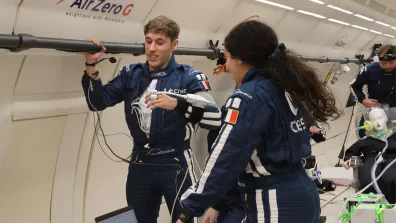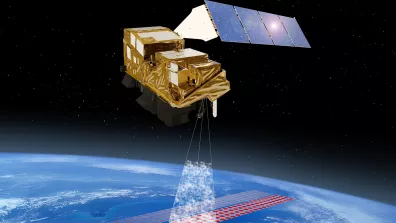The Ariane 6 Launcher Task Force consists of top management at ESA the overall Ariane 6 procuring entity and launch system architect, launch base prime contractor and French space agency CNES, launcher system prime contractor ArianeGroup and launch service provider Arianespace. This group reports regularly on progress being made towards inaugural flight of the new Ariane 6 launcher.
The next update is expected in October.
Key milestones towards inaugural flight
18 July 2023: Combined tests, hot firing test of the main stage with Vulcain 2.1 engine ignition
At Europe’s Spaceport in Kourou, French Guiana, engineers from ArianeGroup, CNES and ESA, successfully completed for the first time a launcher preparation and countdown sequence.
The 26-hour test included the removal of the mobile gantry, the chill-down of ground and launcher fluidic systems, the filling of the upper and core stage tanks with liquid hydrogen (–253°C) and liquid oxygen (–183°C), and the successful completion of a launch chronology up to the ignition of the Vulcain 2.1 engine thrust chamber by the ground system.
During the exercise fully representative of a launch chronology, the teams successfully tested many degraded and contingency modes, demonstrating that the launcher and the launch base fit correctly. Operational procedures, lower and upper stages, avionics, software, launch base and control bench worked correctly together, and the performance of the full launch system was measured with excellent results.
1 September 2023: Upper stage hot firing test, Lampoldshausen
At German aerospace agency DLR’s rocket engine test centre in Lampoldshausen, Germany, engineers from DLR, ArianeGroup and ESA completed another hot-fire test, representative of the inaugural flight.
Assembled at ArianeGroup’s site in Bremen, Germany, the Ariane 6 upper stage incorporates some of the launcher’s main innovations, enabling it to carry out the widest possible range of launch missions, including complex ones such as large-scale deployment of satellite constellations in low Earth orbit (LEO), or successive injection of payloads into different orbital planes. At the end of its mission, the stage is de-orbited.
The stage includes two main tanks for cryogenic propellants (liquid hydrogen and oxygen) to power the Vinci engine which can be re-ignited up to four times, and the innovative Auxiliary Power Unit (APU).
The upper stage test sequence was representative of its full operating phase during Ariane 6’s inaugural flight.
It involved more than 11 minutes (680 seconds) of operation of the Vinci re-ignitable engine in two boosts in parallel with operation of the APU (Auxiliary Power Unit) which was in operation for a cumulative period of nearly 30 minutes.
The APU makes it possible for Vinci to restart in space, by maintaining adequate pressure in the fuel tanks and preventing bubbles in the fuel lines. The APU uses small amounts of liquid hydrogen and oxygen from the main tanks – replacing a system which relied on large quantities of tanked helium.
Next milestones
5 September 2023: Combined tests, hot firing test of the main stage with Vulcain 2.1 engine stabilized operation, Kourou
This second hot-fire test of the main stage will be very close to the previous one (18 July), but will end with 4 seconds of stabilized operation of the Vulcain 2.1 engine.
This test is a key milestone in the combined tests campaign. Its success will enable qualification of all the operations of an Ariane 6 launch countdown. It is part of the overall qualification of the launch system, comprising the launcher and its ground installations, notably the ELA4 launch complex dedicated to Ariane 6, and its ZL4 launch zone.
3 October 2023: Combined tests, long-duration hot firing test of the main stage with Vulcain 2.1 engine stabilized operation, Kourou
This long-duration test will end with about 8 minutes (470 seconds) of stabilized operation of the Vulcain 2.1 engine.
This test will cover the entire flight phase of the core stage and will contribute to “flight-ready” qualification of the main stage.
Autumn 2023: Upper stage hot firing test, Lampoldshausen
Further hot-firing test of the upper stage planned to examine stage behaviour in degraded cases. The objective is to deliver a more robust Ariane 6.
Ariane 6 is an all-new design, created to succeed Ariane 5 as Europe's heavy-lift launch system. With Ariane 6's upper stage restart capability, Europe's launch capability will be tailored to the needs of multiple payload missions, for example to orbit satellite constellations. This autonomous capability to reach Earth orbit and deep space supports Europe's navigation, Earth observation, scientific and security programmes. Ongoing development of Europe's space transportation capabilities is made possible by the sustained dedication of thousands of talented people working in ESA's 22 Member States.





